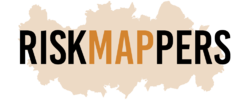Project Groups
|
|
|
|
|
|
Please kindly sign-up by week 3.
Click on your team name in the team column to update your team wiki page. Have fun!
Project Groups
Please change Your Team name to your project topic and change student name to your own name
| Team Name | Project Title | Project Description | Project Artifacts | Members | Sponsor or potential users |
| 3Muskytears_Proposal |
We Care ElderlyCare |
Singapore's population is aging. In 2015, there were 440,000 citizens aged 65 and above. This number is expected to increase by a fold to 900,000 by 2030. With a greying population, there is an expected demand for more elder care facilities. It is expected that by 2030, one in three people in Singapore will be seeking a form of eldercare service. This project explores potential areas to develop elder care facilities while taking into consideration the location's convenience to nearby residential areas and ensuring a comprehensive coverage area. Ideally, the application is developed as a ground-up initiative that will serve as a prescriptive analysis tool for Policy-Makers, Technocrats and the General Public for collaborative usage and understanding as well as facilities planning purposes for our Seniors' well-being in the coming years. |
KHOO PEI SIN, NG SHI MIN, SOON ZHENGXIANG |
||

|
Singapore Risk Elements |
Risk and hazard are terms commonly used to describe aspects of the potential for harm caused by environmental factors and other agents. Since 2014, Singapore has been striving to achieve the vision of being a smart nation. The most integral step in this direction is the analysis and assessment of risk, for it is only by doing so that we can build a healthy, safe and prepared smart nation. After all the steps taken by the Singaporean government and society to be more risk-free, it is important to understand our vulnerability - in terms of dominant contributing factors, location and key institutions that could potentially be affected by these risks. "Risk" is an umbrella term that could cover a number of topics and factors. It could even span industries. Therefore for the purpose of this study, we will define the boundaries of our risk assessment according to 4 agents of risk, namely Biological(biohazards), Technological(explosives), Natural or hydrological(floods), and Societal(epidemics). |
MALLIKA GOKARN, MARK NG WEI JIE, FAN KAIYANG |
| Team | Members | |||||||||||||||||
|---|---|---|---|---|---|---|---|---|---|---|---|---|---|---|---|---|---|---|
| Your Team name | Student name | Student name | Student name | Student name | Student name | Student name | ||||||||||||
| Your Team name | Student name | Student name | Student name | Student name | Student name | Student name | ||||||||||||
| Group 6 | Jasmine Tan | Jesper Lim | Marcus Tan | Student name | Student name | Student name | ||||||||||||
| Group 5 | MALCOLM NATHANIEL NG BAO KUN | EUGENE TAN WEI HONG | AL RAFID BIN ABDUL AZIZ | Student name | Student name | Student name | ||||||||||||
| Your Team name | Student name | Student name | Student name | Student name | Student name | Student name | ||||||||||||
| Your Team name | Student name | Student name | Student name | Student name | Student name | Student name | ||||||||||||
